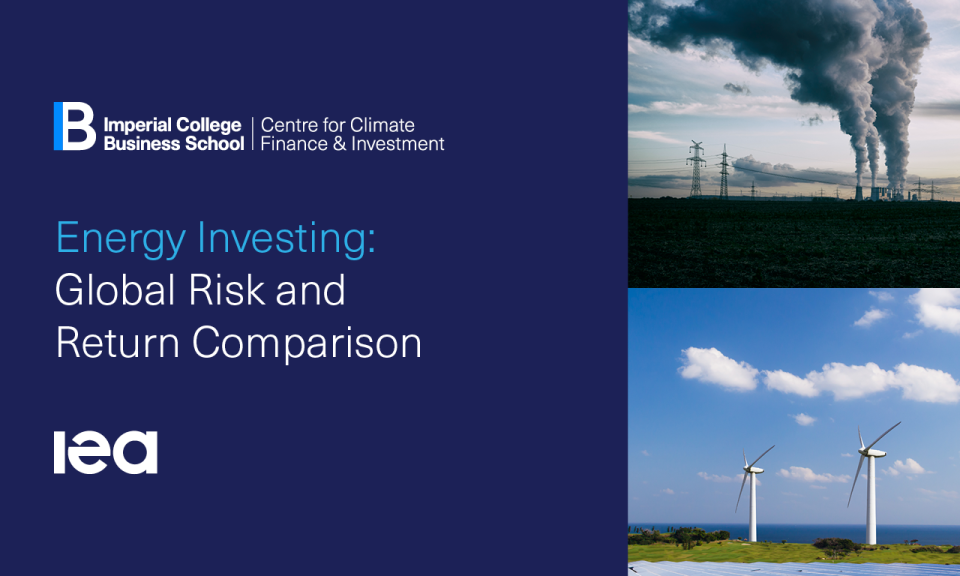
A Joint Report by the International Energy Agency and the Centre for Climate Finance & Investment
Going into the COVID-19 crisis, the trend towards renewable power was accelerating. Renewables accounted for nearly two-thirds of additions to the power sector last year and renewable power capacity had been increasing at over 8% annually over the past 10 years. Yet, despite enormous advances in the cost-competitiveness of renewables over the past decade, investments in clean energy are still falling short of the level needed to put the world’s energy system on a sustainable path.
Capital allocation decisions in the private sector hinge upon expectations. Given the inherent challenges of seeing into the future, investors often rely on history as a guide. Has investing in clean energy made financial sense over time? Was the recent crash in fossil fuel commodity prices positive or negative for renewables? To shed light on this debate, we investigate the historical risk and return proposition to investors in the energy sector. Our study examines the financial performance of listed companies engaged in fossil fuel supply as compared to those active in renewable power over the past 5 and 10 years. Our twofold aim is to document the characteristics of this evolving investment universe and set the stage for a more advanced analysis of investment attractiveness in future reports.
We constructed hypothetical investment portfolios in three countries/regions: 1) the United States, 2) the United Kingdom, and 3) Germany & France. We calculated the total return and annualized volatility of these portfolios over 5 and 10-year periods. Figure 1 shows the 5-year results, which is more complete in terms of data. The numbers for the 10-year view are broadly similar, and can be found in the Results section.
Our results indicate that renewable power shares offered investors higher total returns relative to fossil fuels. Just as importantly, annualized volatility (a measure of investment risk) for the renewable power portfolio was lower across the board.
The complexion of financial markets changed dramatically this year. Unprecedented economic conditions have led to deteriorating fundamentals in the energy sector. An updated look at the US portfolios over the first 4 months of 2020 shows that the renewable power companies have held up better than fossil fuel companies during this period of severe stress and volatility. Our analysis demonstrates a superior risk/return profile for renewable power in both ordinary market conditions and a recent tail risk event.
Given the apparent financial attractiveness of renewable power, why hasn’t financing via public markets taken off? As we explore in this report, risk and return are the cornerstones of investment beliefs. However, to mobilize listed equity investors toward the objective of decarbonization, strong performance may not be sufficient. Additional measures will be required to prepare the industry for full-fledged support from global capital markets.
Note from the Authors:
This is the 2nd Edition of the report, which was first published in May 2020. The following revisions have been made in the 2nd Edition: 1) a correction to the composition of the US Renewable Power Portfolio to exclude a UK equity security that was inadvertently included, 2) an update of a Figure on oil demand by sector, and 3) a recalculation of average market capitalisation for the US and UK Renewable Power Portfolios.